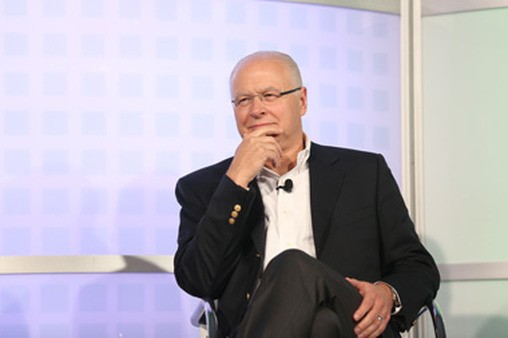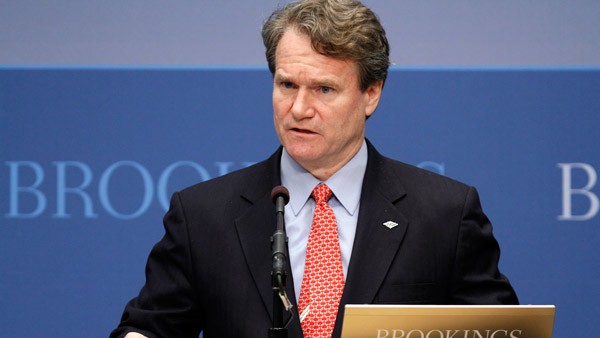TD Ameritrade Goes Its Own Way on RoboAdvisors With a Twist
Post on: 16 Март, 2015 No Comment

Custodian offers resources for RIAs to build their robo-providers, but Tom Nally urges advisors to take a hard look at fees
TD Ameritrade’s Tom Nally.
More On Tax Planning
from The Advisor’s Professional Library
- ETF Taxation The use of ETFs may be attractive to certain investors. The tax advantages may make them even more attractive. Cafeteria Plans The income tax treatment of cafeteria plans is key to their popularity. Learn how to maximize the tax benefits of these “flexible benefit plans”.
TD Ameritrades Tom Nally sat on a panel at the NAPFA Fall Conference in Charlotte, North Carolina, on Wednesday, along with fellow RIA custodian chief Bernie Clark of Schwab, to discuss the threats and opportunities afforded by robo-advisors.
In a telephone interview afterward, Nally said TD Ameritrade would take an open-architecture approach to the issue, providing access through its Veo platform to companies that can help advisors build their own digital advice offerings (including SigFig, Financial Engines, Edelman Online, Trizic and Future Advisor). Advisors can also use robo-providers who already custody with TD (such as jemstep, Upside and NestEgg Wealth).
In addition, he said TDs iRebal software is really the engine that allows its RIAs to provide the same kind of auto-rebalancing and tax loss harvesting that the robo-advisors, or digitial advice providers, do so easily.
Theres lots of interest on how custodians will address robo-advisors, Nally said in the interview, such as the recent announcement by Fidelity IWS that it will make Betterment Institutional available on its platform. and were all waiting with bated breath for what Schwab will offer. (In July, Schwab CEO Walt Bettinger told analysts that.we are fast at work on what we believe will be a groundbreaking and market-impacting introduction of an online advisory solution. Further details have yet to emerge.)
Nally says that we recognize from tons of experience in the space that one size doesnt fit all, when it comes to advisors adopting new technologies of any kind, and robo-advisors wont be any different. So TD advisors get to choose how they want to respond to digital advice competition, though he suggests its time for advisors to up their end game from a technology perspective.
Its more than just adopting a new piece of software, however. Nally says some advisors will want to go after the wealth accumulator, who may not have much in investable assets now but will in the future, when they can be transitioned to a traditional wealth management model. Others say We dont want to go down that path, but we need to do a better job with our technology. So TDs consultants will, he says, work with advisory firms to figure out what they want to do and how to achieve that goal.
However, Nally says that advisors need to take a step back and look at their value proposition, to make sure theyre building their firms and charging for their services the right way.
After all, since investment management is being commoditized, the value an advisor brings is in financial planning, in wealth management, in keeping clients focused on their goals. Advisors need to step back and go to the drawing board and ask How do we charge? If youre charging 100 basis points for investment management, thats like buying the floor mats and getting the car for free. Advisors need to differentiate themselves by considering the services they provide versus robo advisors.

So, he says he asked the audience at the NAPFA conference just as he did at a previous TD event: Why dont you charge 20 basis points for managing a clients total wealth, rather than 100 bps on investable assets?
After all, he says, comprehensive, holistic wealth management is where the value is. Its time for that whole AUM model to be disrupted to properly articulate the value proposition advisors provide.
That conversation will be continued at TD Ameritrades national conference in January, Nally said.
The generational shift is happening, Nally said, and weve got to make sure were doing everything to keep these wealth accumulators.
He stressed, however, that TD learned from focus groups it conducted with young affluent people that all the triggers for hiring an advisor were the same as for older people. Those younger people want advisors to do the financial planning, be the technical person and the advocate, be the educator, Simplify it for me. They want you to be the hub when they experience increasing life complexity and as their amount of wealth increases.
The big difference from those younger affluent people came in how they prefer to communicate. Theres much less emphasis on the face-to-face approach with advisors, Nally said. Instead they want 24-hour-a-day, on-demand information from their advisors. Thats why, he said, advisors must up their tech game.
Were in the early innings of this whole robo movement, Nally said. All these firms have gathered venture capital and private equity. Theyre burning a lot of dough and havent been terribly successful, yet, at gathering assets.
In a prior interview marking his place on the Investment Advisor IA 25 for 2014. Nally placed the challenge of robo-advisors into the context of understanding the needs of clients based on their current life stage. They might not need a more comprehensive plan than what robo-advisors now offer and what most advisors do not. One of the challenges were facing now is that technology is evolving faster than the ability of advisors to bring that technology into their shops.
— Related on ThinkAdvisor:














